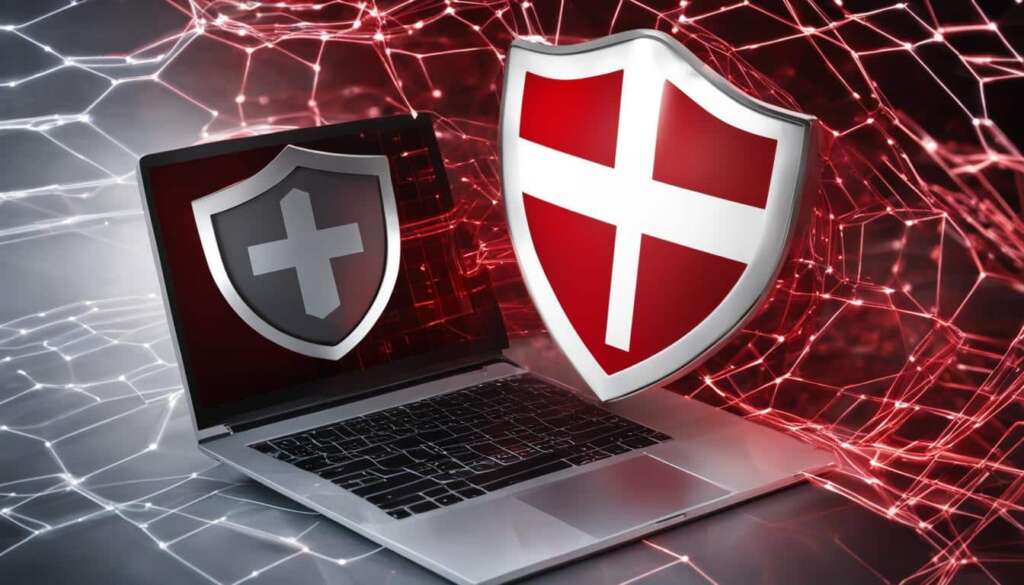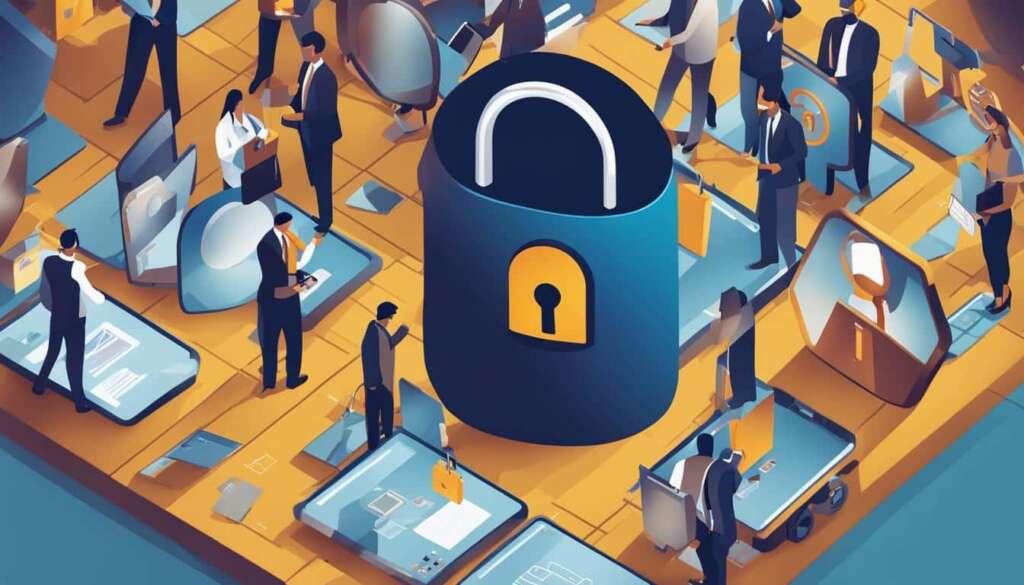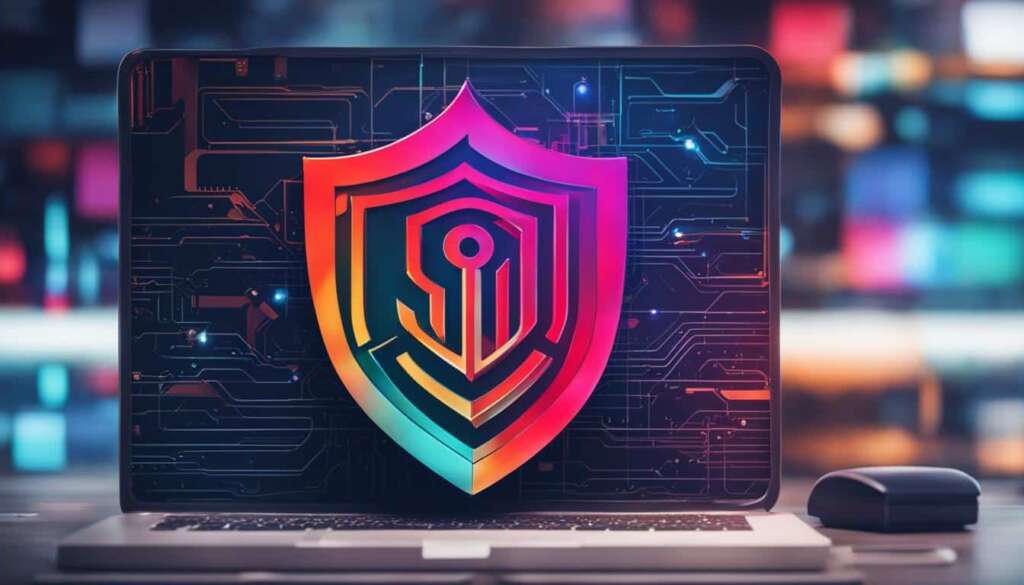Table of Contents
Welcome to our article series on cybersecurity in healthcare. In this series, we will explore the importance of data protection, the challenges faced by healthcare organizations, and best practices to safeguard patient data.
The Importance of Cybersecurity in Healthcare
The healthcare industry is increasingly reliant on digital systems and technologies to store and manage sensitive patient data. As a result, it has become a prime target for cybercriminals seeking to exploit vulnerabilities and gain unauthorized access to valuable information. Healthcare data breaches have far-reaching consequences, including financial loss, reputational damage, and compromised patient privacy. Therefore, it is crucial for healthcare organizations to prioritize cybersecurity measures to protect patient data and ensure the integrity of their systems.
Effective cybersecurity in the healthcare industry involves implementing robust security protocols and technologies. Encryption protocols can help safeguard patient data by ensuring that it is encoded and only accessible to authorized individuals. Access controls, such as multi-factor authentication, can prevent unauthorized users from gaining entry to sensitive systems and data. Regular security audits and vulnerability assessments are essential for identifying and addressing potential weaknesses in the network infrastructure.
Furthermore, ongoing staff education and training are critical components of a comprehensive cybersecurity strategy. Healthcare professionals must be aware of the latest threats and best practices for safeguarding patient data. By promoting a culture of cybersecurity awareness and vigilance, healthcare organizations can significantly reduce the risk of successful cyberattacks and minimize the potential impact on patient safety and privacy.
Understanding Cybersecurity Threats in Healthcare
Cybersecurity threats in the healthcare industry pose significant risks to the security and privacy of patient data. Healthcare organizations are particularly vulnerable due to the valuable information they possess, making them prime targets for cybercriminals. To effectively address these threats, it is important to understand the various vulnerabilities that exist within healthcare facilities.
Common Cybersecurity Threats
Ransomware attacks are one of the most prevalent and concerning threats faced by healthcare organizations. These attacks involve malicious actors encrypting an organization’s data and demanding a ransom in exchange for its release. Such attacks can disrupt critical healthcare services and compromise patient safety. Other common threats include:
- Outdated software: Healthcare organizations often use legacy systems with known vulnerabilities that can be exploited by cybercriminals.
- Weak passwords: Weak or easily guessable passwords provide an entry point for attackers to gain unauthorized access to sensitive information.
- Phishing attempts: Cybercriminals use deceptive emails or messages to trick healthcare employees into revealing sensitive information or downloading malware.
- Unprotected mobile devices: The use of mobile devices in healthcare settings can introduce vulnerabilities if not properly secured.
- Unsecured networks: Inadequately secured wireless networks can be exploited by attackers to gain unauthorized access to healthcare systems.
By understanding these threats, healthcare organizations can take proactive measures to mitigate the risks and protect patient welfare.
Proactive Risk Management and Governance
Implementing proactive risk management and governance strategies is crucial for healthcare organizations to enhance their cybersecurity posture. This includes:
- Regular vulnerability assessments and penetration testing to identify and address weaknesses in systems and networks.
- Developing and enforcing strong password policies to ensure that employees use secure and unique passwords.
- Providing comprehensive cybersecurity training to all staff members, educating them about common threats and best practices for data protection.
- Implementing multi-factor authentication, encryption protocols, and access controls to ensure that only authorized individuals can access sensitive data.
By adopting these proactive measures, healthcare organizations can strengthen their cybersecurity defenses and mitigate the risks associated with cyber threats in the industry.
| Cybersecurity Threat | Risk | Mitigation Strategies |
|---|---|---|
| Ransomware attacks | Disruption of critical healthcare services and compromise of patient safety | Regular data backups, network segmentation, employee training, and robust incident response plans. |
| Outdated software | Potential vulnerabilities that can be exploited by attackers | Regular patching and updates, use of modern software solutions, and vulnerability assessments. |
| Weak passwords | Unauthorized access to sensitive information | Strong password policies, multi-factor authentication, and regular password updates. |
| Phishing attempts | Compromise of sensitive data through social engineering tactics | Employee training, spam filters, and email validation techniques. |
Best Practices for Protecting Healthcare Data
Ensuring effective data protection in the healthcare industry is crucial to safeguard patient privacy and maintain trust. Healthcare organizations should follow best practices to mitigate the risks associated with data breaches and cyber threats. Here are some key strategies to consider:
1. Staff Education and Awareness:
Human error is one of the leading causes of data breaches. It’s essential to educate employees about the importance of data protection and train them on best practices. Regular awareness programs and simulated phishing exercises can help staff identify and respond to potential security risks.
2. Access Controls and Data Usage Controls:
Limited access to data and applications is essential to prevent unauthorized access. Implementing robust access controls ensures that only authorized personnel can access sensitive information. Data usage controls should also be in place to prevent risky or malicious activities, such as unauthorized data transfers or downloads.
3. Logging and Monitoring:
Regular monitoring and logging of data use can help detect and prevent security incidents. By analyzing logs, healthcare organizations can identify any suspicious activities and take immediate action. Monitoring also provides valuable insights for auditing and improving security measures.
4. Encryption of Data:
Data encryption plays a critical role in protecting sensitive healthcare information. It ensures that data is not accessible to unauthorized individuals, even if it’s intercepted. Healthcare organizations should implement encryption protocols to secure data both at rest and in transit.
5. Securing Mobile Devices:
Mobile devices are commonly used in healthcare settings, making them vulnerable to security breaches. Healthcare organizations should enforce strong password policies, encourage the use of biometric authentication, and implement remote wipe capabilities for lost or stolen devices. Regular security updates and patches should also be applied to ensure device security.
6. Regular Risk Assessments and Off-Site Data Backup:
Conducting regular risk assessments helps identify vulnerabilities and areas for improvement. It is crucial to assess the effectiveness of existing security measures and make necessary adjustments. Additionally, healthcare organizations should regularly back up data to off-site locations to ensure data availability in the event of a breach or disaster.
| Best Practices for Protecting Healthcare Data |
|---|
| Staff Education and Awareness |
| Access Controls and Data Usage Controls |
| Logging and Monitoring |
| Encryption of Data |
| Securing Mobile Devices |
| Regular Risk Assessments and Off-Site Data Backup |
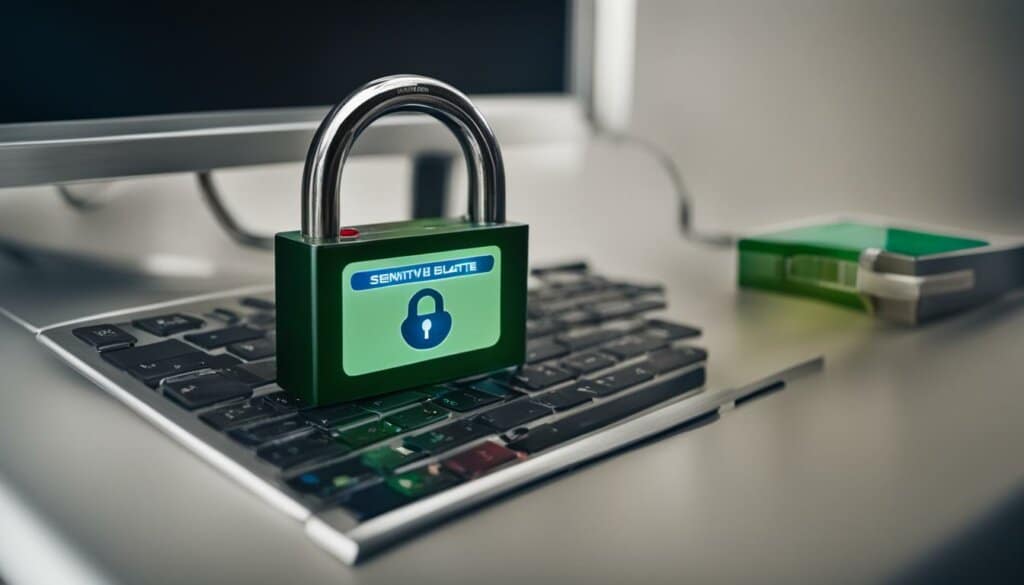
Patient Data Protection in Healthcare
When it comes to healthcare cybersecurity, securing patient data is of utmost importance. Healthcare organizations not only have a responsibility to protect their patients’ sensitive information but also to comply with regulations such as HIPAA and GDPR. By implementing robust security measures and adopting industry best practices, healthcare providers can ensure the confidentiality, integrity, and availability of patient data.
One key aspect of patient data protection is fortifying electronic health records (EHRs) and medical devices. Encryption protocols should be in place to protect data at rest and in transit, ensuring that unauthorized individuals cannot access or tamper with the information. Additionally, healthcare organizations should invest in access controls to limit data access to authorized personnel only, reducing the risk of insider threats and unauthorized disclosures.
Regular cybersecurity training for staff is vital to create a culture of security awareness. Employees should be educated on the risks of phishing attacks, social engineering techniques, and how to identify and respond to potential threats. By raising awareness and empowering staff to be vigilant, healthcare organizations can mitigate the risk of falling victim to cyberattacks.
| Best Practices for Patient Data Protection | Benefits |
|---|---|
| Implement encryption protocols for data at rest and in transit | Confidentiality and integrity of patient data |
| Restrict data access to authorized personnel | Reduced risk of insider threats and unauthorized disclosures |
| Provide regular cybersecurity training for staff | Increased security awareness and better response to potential threats |
By prioritizing patient data protection and adopting a multi-faceted approach to cybersecurity, healthcare organizations can safeguard sensitive information, maintain compliance with regulations, and provide a secure environment for patient care.
Strengthening Email Security in Healthcare
Email communication is an essential part of healthcare operations, allowing for efficient and timely exchange of information between healthcare professionals. However, it also presents significant security risks, as email accounts can be targeted by cybercriminals seeking to gain unauthorized access to sensitive patient data. To ensure the protection of patient privacy and maintain the integrity of healthcare organizations, robust email security measures must be implemented.
One of the key steps in strengthening email security is educating healthcare staff about the risks associated with email communications and how to identify and respond to malicious emails. By providing comprehensive training on recognizing phishing attempts, suspicious attachments, and fraudulent links, healthcare professionals can become the first line of defense against email-based cyber threats.
In addition to staff education, implementing secure email gateways is crucial for preventing unauthorized access to email accounts. These gateways act as a filter, scanning incoming and outgoing emails for potential threats and blocking them before they reach recipients’ inboxes. Secure email gateways employ advanced threat detection technologies, such as antivirus scans, spam filters, and content filtering, to ensure that only legitimate and safe emails are delivered to healthcare professionals.
Furthermore, healthcare organizations should enforce strong password policies and implement multi-factor authentication for email accounts. This adds an extra layer of security by requiring healthcare professionals to provide multiple forms of identification, such as a password and a fingerprint or a one-time code, to access their email accounts. By incorporating these authentication methods, the risk of unauthorized access to sensitive patient data via compromised email accounts is significantly reduced.
Best Practices for Email Security in Healthcare:
- Educate healthcare staff about email security best practices, including recognizing phishing attempts and suspicious emails.
- Implement secure email gateways to filter and block malicious emails.
- Enforce strong password policies and implement multi-factor authentication for email accounts.
- Regularly update email security protocols and software to protect against emerging threats.
- Conduct ongoing security awareness training to ensure healthcare professionals remain vigilant against email-based cyber threats.
By strengthening email security measures, healthcare organizations can protect patient privacy, prevent data breaches, and maintain the trust of individuals who rely on them for their healthcare needs.
Preventing Phishing Attacks in Healthcare
Phishing attacks pose a significant threat to the cybersecurity of healthcare organizations. These scams involve cybercriminals impersonating trustworthy entities to trick individuals into revealing sensitive information or downloading malware. Recognizing and preventing phishing attacks is crucial to safeguard patient data and protect the reputation of healthcare providers.

In order to prevent phishing attacks, healthcare organizations should prioritize staff education and training. Employees need to be able to identify suspicious emails, such as those requesting personal information or urging immediate action. Regular phishing awareness campaigns and simulated phishing exercises can help to reinforce knowledge and ensure that employees remain vigilant.
“Phishing attacks pose a significant threat to the cybersecurity of healthcare organizations.”
Technical safeguards are also essential in preventing phishing attacks. Implementing multi-factor authentication can add an extra layer of security, requiring users to verify their identity through multiple means. Data encryption is another crucial tool, helping to protect sensitive information even if it falls into the wrong hands. Additionally, utilizing anti-phishing tools and software can help to detect and quarantine potential phishing emails before they reach users’ inboxes.
Key Takeaways
- Phishing attacks are a significant threat to healthcare organizations.
- Staff education and training are vital in preventing phishing incidents.
- Technical safeguards such as multi-factor authentication and data encryption can provide additional protection.
- Anti-phishing tools and software aid in detecting and quarantining potential phishing emails.
By implementing a combination of education, training, and technical safeguards, healthcare organizations can significantly reduce the risk of falling victim to phishing attacks. Protecting patient privacy and maintaining the integrity of sensitive healthcare data should be a top priority in the ever-evolving landscape of cybersecurity threats.
The Role of Stakeholders in Healthcare Cybersecurity
In the complex landscape of healthcare cybersecurity, various stakeholders play critical roles in safeguarding sensitive data and protecting patient privacy. These stakeholders collaborate to establish robust security measures, ensure compliance with regulations, and mitigate the risks posed by cyberthreats.
Healthcare Providers
Healthcare providers, including hospitals, clinics, and medical practitioners, bear the responsibility of implementing strong security safeguards to protect patient data. They must prioritize cybersecurity as a fundamental aspect of patient care and allocate resources to establish and maintain a secure environment. By adhering to regulations such as the Health Insurance Portability and Accountability Act (HIPAA) and the General Data Protection Regulation (GDPR), healthcare providers demonstrate their commitment to safeguarding patient privacy and maintaining the trust and confidence of individuals.
IT Professionals
IT professionals in healthcare organizations are at the forefront of ensuring a secure technological infrastructure. They play a crucial role in setting up secure networks, regularly updating software, and implementing strong access controls. By keeping up-to-date with emerging threats and deploying advanced security technologies, IT professionals contribute to safeguarding patient data and protecting healthcare organizations from malicious actors.
Vendors and Business Associates
Vendors and business associates, who provide various services and solutions to healthcare organizations, also have a crucial role in healthcare cybersecurity. It is essential for healthcare providers to carefully evaluate the security practices and compliance of these entities before entering into partnerships or contracts. By selecting vendors and business associates that meet stringent security standards, healthcare organizations can ensure the protection of patient data throughout its lifecycle.
Collaboration and a holistic approach are key when it comes to healthcare cybersecurity. By working together, stakeholders can establish a robust defense against cyberthreats and protect the privacy and well-being of patients.
| Key Stakeholders | Role |
|---|---|
| Healthcare Providers | Implement strong security safeguards and prioritize cybersecurity |
| IT Professionals | Set up secure networks, update software, and establish access controls |
| Vendors and Business Associates | Provide secure services and solutions, ensuring compliance |
The Challenges of Healthcare Data Protection
Ensuring robust data protection in the healthcare sector presents unique challenges and risks. The sensitive nature of patient information, coupled with the evolving threat landscape, requires healthcare organizations to remain vigilant and proactive in safeguarding data.
“Healthcare data protection is a constant battle against cybercriminals who seek to exploit vulnerabilities and gain unauthorized access to valuable patient records,” says Dr. Jane Simmons, a cybersecurity expert. “The increasing digitization of healthcare records and the interconnectedness of healthcare systems make data protection more challenging.”
One of the primary challenges is the balancing act between preserving patient privacy and delivering quality care. Healthcare providers must ensure that stringent security measures are in place without impeding the timely and efficient delivery of healthcare services. Additionally, complying with regulations like HIPAA and GDPR adds another layer of complexity.
Wireless networks and mobile devices further heighten the cybersecurity risks faced by healthcare organizations. These technologies offer convenience and mobility, but they also open up potential entry points for cyberattacks. Ensuring the security of these devices and networks is vital to protect against unauthorized access and data breaches.

The rapidly evolving threat landscape is yet another challenge in healthcare data protection. Cybercriminals continuously develop new tactics and techniques to exploit vulnerabilities. Staying ahead of these threats requires constant awareness, regular cybersecurity audits, and the implementation of robust security measures.
| Challenge | Impact |
|---|---|
| Preserving patient privacy while delivering quality care | Risk of compromising patient privacy or impeding healthcare services |
| Compliance with regulations like HIPAA and GDPR | Legal and financial consequences for non-compliance |
| Securing wireless networks and mobile devices | Potential entry points for cyberattacks |
| Rapidly evolving threat landscape | Constant adaptation and implementation of new security measures required |
Implementing Data Protection Best Practices in Healthcare
In order to effectively protect healthcare data, it is crucial for organizations to implement a range of best practices. By adopting a multi-faceted approach to cybersecurity, healthcare providers can minimize the risk of data breaches and safeguard sensitive patient information. Here are some key strategies to consider:
1. Educate Staff
One of the most important steps in data protection is ensuring that all staff members are well-educated on cybersecurity best practices. This includes training them to recognize and respond to potential threats such as phishing attempts and malware. Regular training sessions and updates on emerging cyber threats can help create a culture of security awareness within the organization.
2. Implement Access Controls
Controlling access to data and applications is essential for maintaining data security. Healthcare organizations should implement access controls that restrict data access to authorized personnel only. This can be done through the use of strong passwords, user authentication protocols, and role-based access controls. Regular monitoring and auditing of user access can help identify any unauthorized activity and prevent potential breaches.
3. Encrypt Data
Encrypting data both at rest and in transit is another crucial aspect of data protection. Encryption ensures that even if data is intercepted or stolen, it remains unreadable and unusable by unauthorized individuals. Healthcare organizations should utilize robust encryption protocols to protect sensitive patient information, including electronic health records and other confidential data.
4. Secure Mobile Devices
With the increasing use of mobile devices in healthcare, securing these devices is paramount. Healthcare providers should implement measures such as strong passwords, device encryption, and remote wiping capabilities to protect sensitive data stored on mobile devices. Regularly updating mobile device software and installing security patches can also help mitigate vulnerabilities.
5. Conduct Regular Risk Assessments
Regular risk assessments are essential for identifying and mitigating potential cybersecurity risks. Healthcare organizations should evaluate their systems, networks, and processes to identify vulnerabilities and gaps in security. By conducting regular risk assessments, organizations can proactively address potential issues and implement appropriate measures to protect sensitive data.
By implementing these data protection best practices, healthcare organizations can enhance their cybersecurity posture and minimize the risk of data breaches. However, it is important to note that cybersecurity is an ongoing effort, and organizations must remain vigilant in the face of evolving threats.
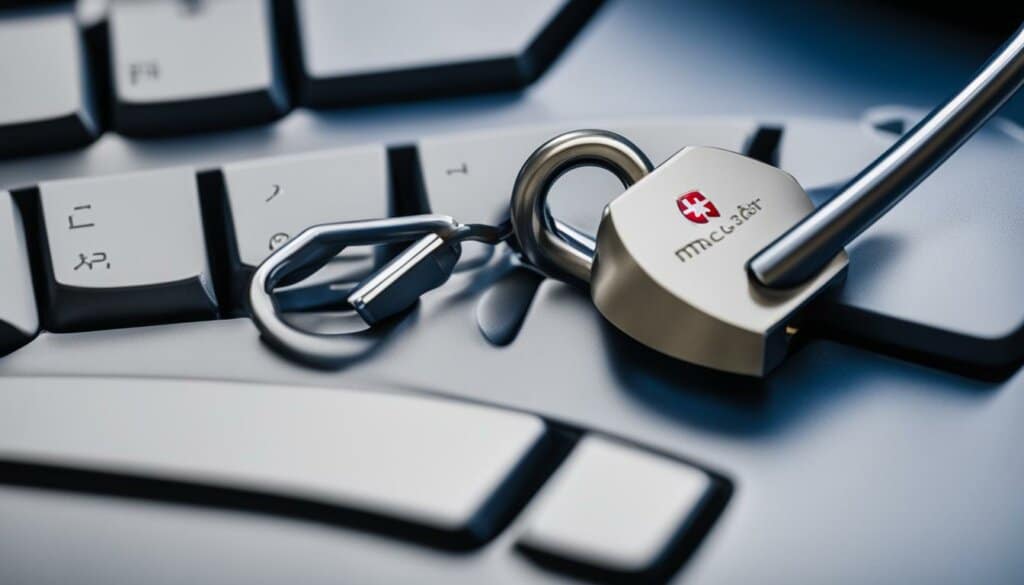
The Importance of Compliance in Healthcare Data Protection
Compliance with regulations is a critical aspect of healthcare data protection. By adhering to guidelines such as HIPAA (Health Insurance Portability and Accountability Act) and GDPR (General Data Protection Regulation), healthcare organizations can ensure the safety and privacy of patient information. These regulations establish requirements for the secure collection, storage, and transfer of sensitive data, and failure to comply can lead to severe penalties and reputational damage.
HIPAA compliance specifically focuses on protecting patient data in the United States. It sets standards for healthcare providers, health plans, and other entities that handle protected health information (PHI). By implementing appropriate administrative, physical, and technical safeguards, organizations can mitigate the risk of data breaches and unauthorized access to patient information. HIPAA compliance also requires organizations to maintain comprehensive documentation and conduct regular risk assessments to identify and address any vulnerabilities.
On the other hand, GDPR compliance applies to organizations that handle the personal data of individuals in the European Union. It emphasizes the importance of consent, transparency, and accountability in data processing. Healthcare organizations must ensure they have lawful bases for processing personal data, and individuals must be informed about how their data will be used. GDPR also grants individuals certain rights, such as the right to access their data and the right to erasure. Organizations must have appropriate security measures in place and report any data breaches within a specified timeframe.
By prioritizing compliance with regulations like HIPAA and GDPR, healthcare organizations can demonstrate their commitment to protecting patient privacy and data security. This fosters trust among patients and helps maintain the integrity of the healthcare industry as a whole. Implementing robust security measures, conducting regular audits and risk assessments, and providing ongoing staff training are crucial components of maintaining compliance and safeguarding sensitive healthcare data.
Conclusion
Cybersecurity is a critical aspect of protecting sensitive data in healthcare. With the increasing frequency and sophistication of cyberthreats, healthcare organizations must prioritize cybersecurity and implement robust security measures to safeguard patient privacy and prevent data breaches.
By adopting a multi-faceted approach that includes educating staff, implementing access controls, and encrypting data, healthcare organizations can create a strong defense against cyberattacks. Regular risk assessments and off-site data backup are also essential to ensure the resilience of their cybersecurity infrastructure.
Compliance with regulations such as HIPAA and GDPR is vital for healthcare organizations to maintain patient trust and confidence. By staying up-to-date on the latest requirements and carefully selecting compliant vendors and business associates, healthcare providers can demonstrate their commitment to protecting sensitive data.
Ultimately, the protection of sensitive data in healthcare is a shared responsibility that requires collaboration among various stakeholders. By working together and staying vigilant against evolving threats, healthcare organizations can ensure the delivery of high-quality, secure care and maintain the privacy and confidentiality of patient information.
FAQ
Why is cybersecurity important in healthcare?
Cybersecurity is crucial in healthcare to protect sensitive patient data from cyberattacks and breaches. It ensures patient privacy, maintains compliance with regulations, and safeguards the delivery of secure care.
What are the main cybersecurity threats in healthcare?
Healthcare organizations face cyber threats such as data breaches, ransomware attacks, and phishing attempts. These threats can compromise patient privacy, disrupt patient care, and lead to financial loss and reputation damage.
How can healthcare organizations protect patient data?
Healthcare organizations can protect patient data by implementing robust cybersecurity measures, including encryption protocols, access controls, secure network infrastructure, and regular staff training on cybersecurity best practices.
What role do stakeholders play in healthcare cybersecurity?
Stakeholders in healthcare, such as healthcare providers and IT professionals, have critical roles in upholding cybersecurity. Healthcare providers are responsible for implementing strong security safeguards, while IT professionals set up secure networks and keep software updated.
What are the challenges of healthcare data protection?
Healthcare data protection faces challenges such as balancing patient privacy with delivering quality care, meeting regulatory requirements, and addressing the evolving threat landscape. Vulnerabilities in wireless networks and mobile devices also pose risks.
What best practices should healthcare organizations follow for data protection?
Healthcare organizations should follow best practices such as educating staff on cybersecurity, implementing access controls and data usage controls, encrypting data, securing mobile devices, conducting regular risk assessments, and ensuring compliance with regulations.
Why is compliance important in healthcare data protection?
Compliance with regulations such as HIPAA and GDPR is essential in healthcare data protection. It helps protect patient privacy, maintain trust and confidence in healthcare providers, and ensures the proper handling and security of sensitive patient information.
Source Links
- https://www.aha.org/center/cybersecurity-and-risk-advisory-services/importance-cybersecurity-protecting-patient-safety
- https://www.digitalguardian.com/blog/healthcare-cybersecurity-tips-securing-private-health-data
- https://www.stanfieldit.com/cyber-security-for-healthcare/

